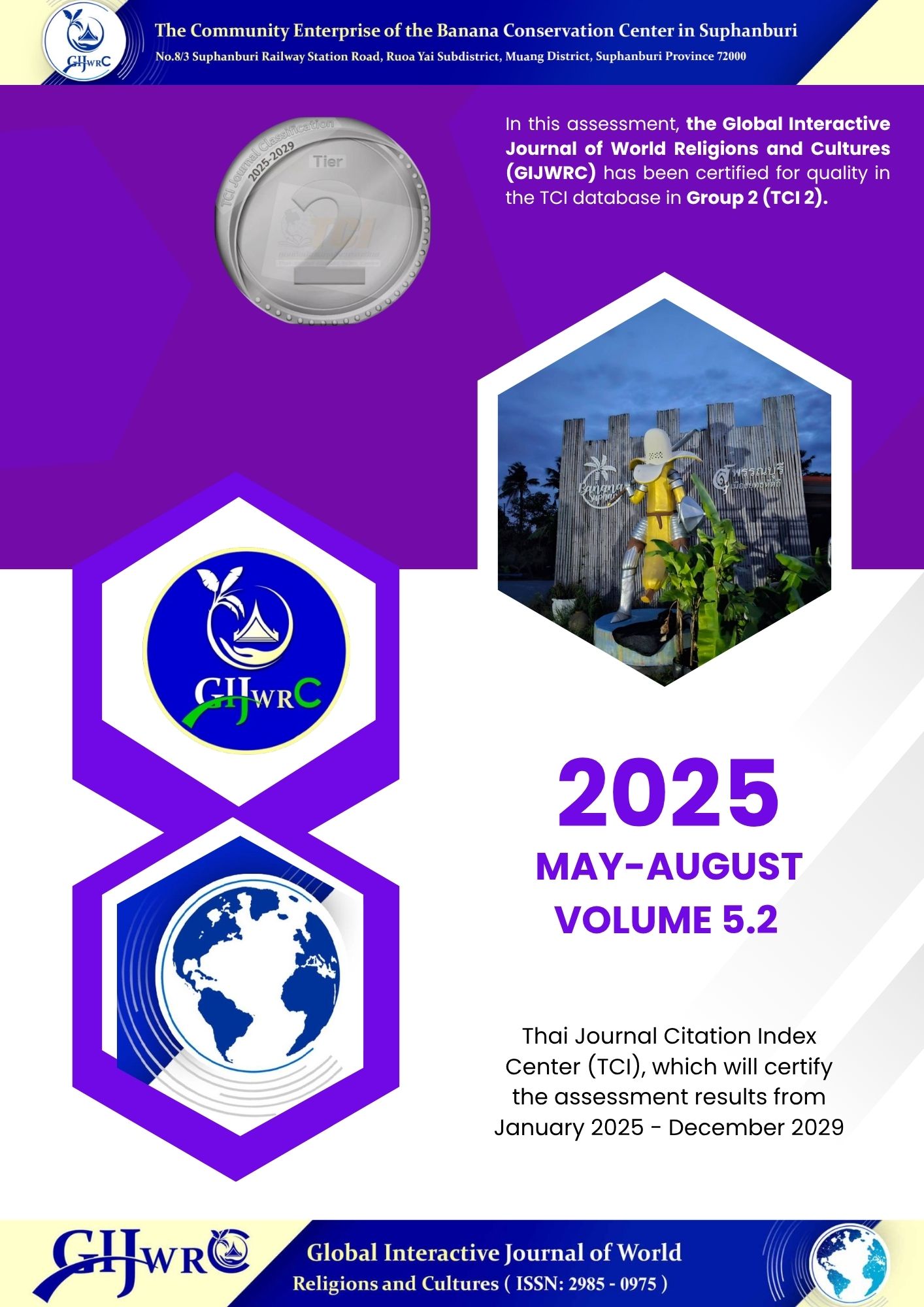CONSTRUCTING THE MONGOLIAN DANCE GUIDEBOOK FOR TEACHING COLLEGE STUDENTS MAJORING IN PRESCHOOL EDUCATION AT CHAOYANG NORMAL UNIVERSITY, CHAOYANG, LIAONING, CHINA
Main Article Content
Abstract
Mongolian dance is an essential part of Chinese culture, deeply rooted in the traditions, beliefs, and way of life of the Mongolian ethnic group. As an expressive art form, it reflects the cultural essence and historical continuity of the Mongolian people while contributing to the diversity of Chinese traditional dance. In the context of preschool education, integrating Mongolian dance into the curriculum can enhance students' artistic appreciation, cultural awareness, and physical coordination. However, there is a lack of systematic teaching materials tailored to preschool education majors. This study aimed to: (1) explore Mongolian dance through expert insights, (2) construct a Mongolian Dance Guidebook for teaching college students majoring in preschool education at Chaoyang Normal University, (3) implement the guidebook in a teaching experiment, and (4) evaluate its effectiveness. A mixed-methods research approach was employed, combining qualitative and quantitative methodologies. Qualitative research involved expert interviews and movement analysis to develop the guidebook, while quantitative research utilized experimental teaching data and statistical analysis to assess students' progress. The research population comprised 30 second-year students majoring in preschool education at Chaoyang Normal University, with a selected sample of 10 students representing different skill levels. Three key informants, all esteemed Mongolian dance experts, provided guidance in structuring the guidebook. The research findings indicate that the Mongolian Dance Guidebook effectively enhances students’ understanding, skills, and creativity in Mongolian dance. The teaching experiment, conducted over 14 weeks, introduced students to Mongolian dance theory, fundamental movement training, children’s dance studies, and choreography. Evaluation through formative and summative assessments demonstrated significant improvement in students' technical proficiency, expressive performance, and creative ability. The formative tests showed a progressive increase in students' mastery of basic movements, rhythm coordination, and ability to perform Mongolian dance combinations with cultural authenticity. By the end of the course, summative assessments revealed that most students achieved high scores in movement standardization, expressive force, and choreography application, with only minor variations in individual performance levels. The results highlight that structured instruction, combining traditional teaching methods with innovative approaches, not only improves technical ability but also fosters students' engagement and confidence. Furthermore, the integration of Mongolian dance elements into children's dance creation proved to be an effective pedagogical strategy, enabling students to apply their knowledge in a meaningful way within preschool education settings. The study confirms that the Mongolian Dance Guidebook serves as a valuable instructional resource, enhancing students’ professional competence, artistic expression, and cultural appreciation while addressing the educational needs of preschool education majors.
Article Details
References
Chu, X. (2018). Aesthetic Characteristics of Mongolian Folk Dance. Drama
House, 2018(33), p.118.
Dai, Y. (2016). Analysis on the Application of Music in Mongolian Dance.
Drama House, 2016(10), p.152.
Li, B. (2020). Study on the influence of regionalism on China folk dance.
Drama House, 2020(13), p.116.
Li, W. (2017). On the inheritance and development of folk-dance culture in
China. Northern Music, 2017(2), p.18.
Liao, P. (2021). Style Teaching in Mongolian Dance Teaching. Drama House,
(23), pp.123-124.
Ou, J. (2024). Basic Principles and Design of Children's Dance Creation. Art
Evaluation, 2024(8), pp.93-98.
Ren, X. (2024). Research on Teaching Strategies of Ethnic and Folk Dances
in Dance Courses for Preschool Education Majors. China Ethnic Expo, 2024(4), pp.178-180.
Wang, H. (2024). Reflections on Dance Teaching in Colleges and Universities
from the Perspective of Aesthetic Education in the New Era. Drama House, 2024(33), pp.137-140.
Wang, H. (2024). A Study on Children's Dance Creation Curriculum for
Early Childhood Education. Drama House, 2024(19), pp.148-150.
Wei, X. (2024). Exploration on the path of cultivating students' aesthetic
ability by relying on dance courses for preschool education majors. Science and technology wind, 2024(36), pp.37-39.
Yang, L. (2023). On the National Folk Dance Teaching in the Dance Course
of Preschool Education Major in Higher Vocational Colleges. Drama
House, 2023(8), pp.132-134.
Zhou, X., & Wu, Y. (2024). Exploring the application of children's dance
creation in dance courses for preschool education majors. Drama House, 2024(12), pp.129-131.


